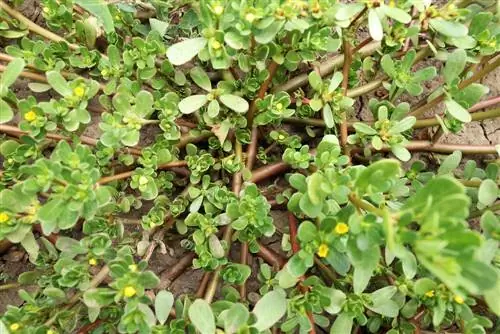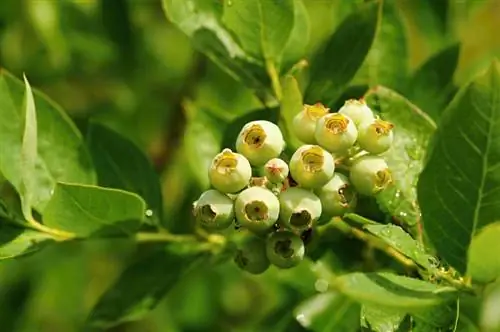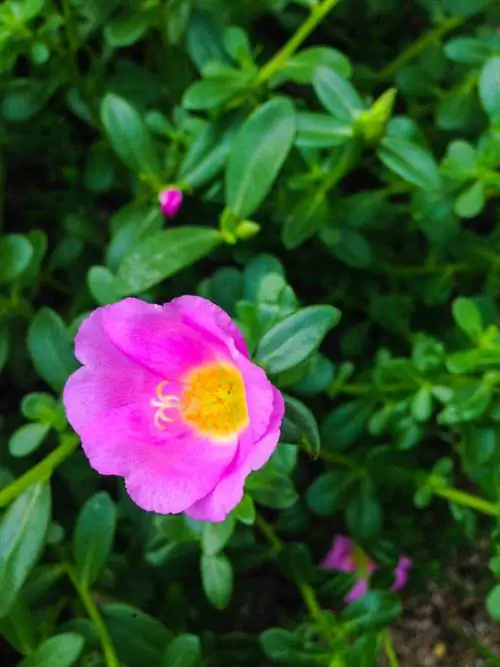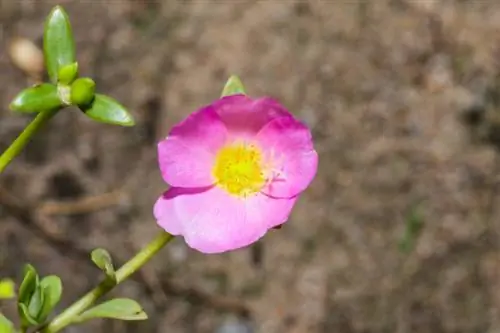- Author admin [email protected].
- Public 2023-12-16 16:46.
- Last modified 2025-01-23 11:22.
Although purslane has been used as a vegetable for centuries, it is rarely found on plates today. In some gardens, the wild plant is making a comeback. It deserves more attention because its short vegetation period makes it extremely productive.
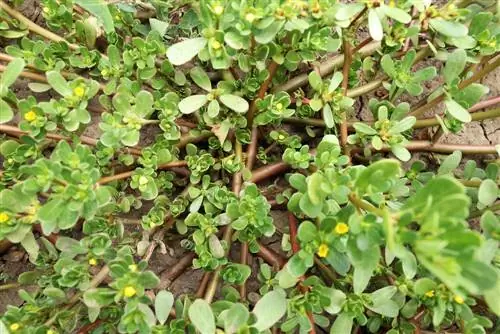
When is purslane season?
Purslane is in season all year round, with the main outdoor cultivation taking place from March to October. Winter purslane, on the other hand, is sown from September to February and harvested in spring.
This is how vegetable purslane grows
The annual purslane develops succulent plant parts and has almost been forgotten as a wild vegetable. The prostrate to creeping plant has bushy branches and reaches a height of between ten and 40 centimeters. In Germany the species rarely occurs in the wild. It occurs as a pioneer plant in cracks in pavement or in fields and along roadsides.
Claims
Loose sandy and clay soils, which provide lots of nutrients, are preferred. Drought during the summer months is not a problem. Purslane requires warmer than average and dry summer periods to thrive. The plants store water and can therefore tolerate periods of low rainfall. If you amend the bed with compost, you will encourage strong growth. The leaves develop strongly and taste more tender. Additional fertilizer is not necessary during the growth phase.
From seed to harvest
Due to the short growing season, vegetables are in season all year round. The main cultivation takes place outdoors from March to October. Between November and February, grow the plants in the planter in an illuminated mini greenhouse (€31.00 on Amazon). If you cultivate the vegetable plant in your garden, you can start harvesting after just four to six weeks, because summer purslane has a high growth and reproduction rate.
How to store the harvest:
- Wash the papers
- Put dripping wet in a freezer bag
- Seal with air and store in the refrigerator
How to harvest correctly
Cut off the longest parts of the plant and then use the thick-fleshed leaves for your dishes. During the summer months the plants sprout continuously. During the flowering period, the parts of the plant become increasingly bitter. Leave the shoots to develop seeds. When these fall onto the substrate, they germinate and produce the next harvest within a short time.
Tip
Water the plant thoroughly a week before the harvest date. This allows the leaves to soak up water one last time so that they taste crisper.
Winter purslane in portrait
Purslane, also known as summer purslane and has the scientific name Portulaca oleracea, is different from winter purslane. Behind this plant is the species Claytonia perfoliata, which belongs to a different genus. The leaves have a nutty note and are reminiscent of lamb's lettuce. The hardy wild species is sown all year round from September to February because it requires temperatures below twelve degrees to germinate. The harvest season begins in spring.
Requirements
Postelein thrives in partially shaded conditions on well-loose substrates. The lettuce plant does not require nutrient-rich soil and does not need additional fertilization. It is important to water the young plants regularly in dry phases.

